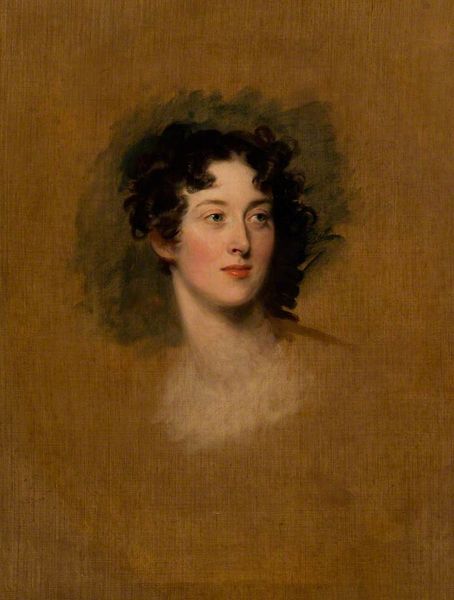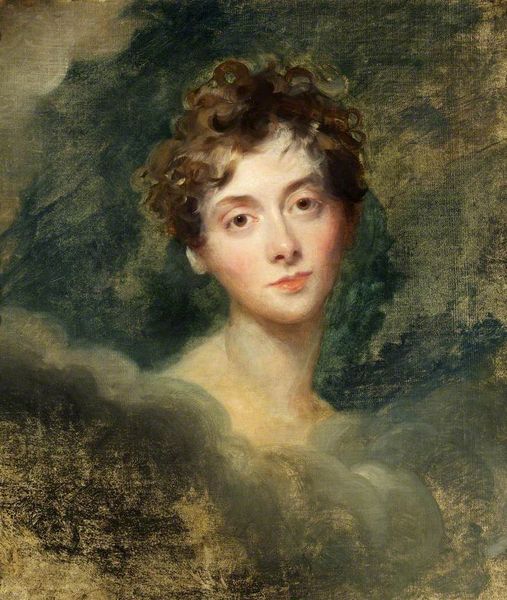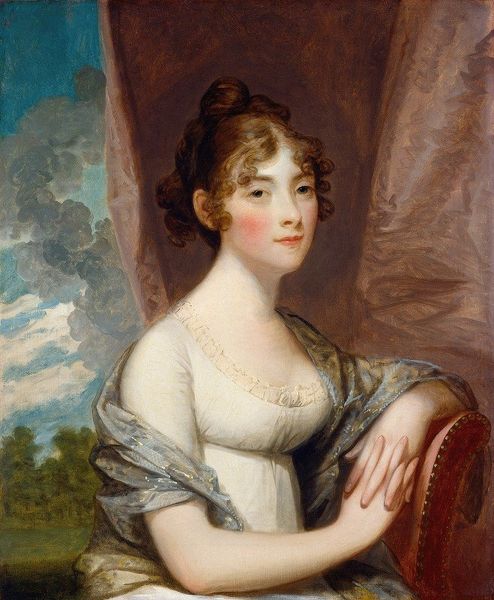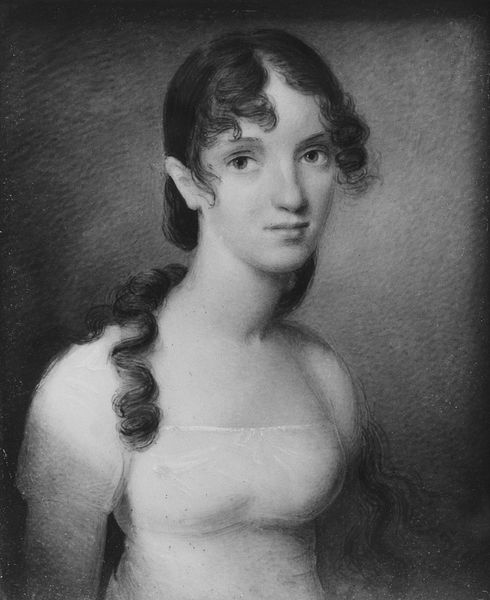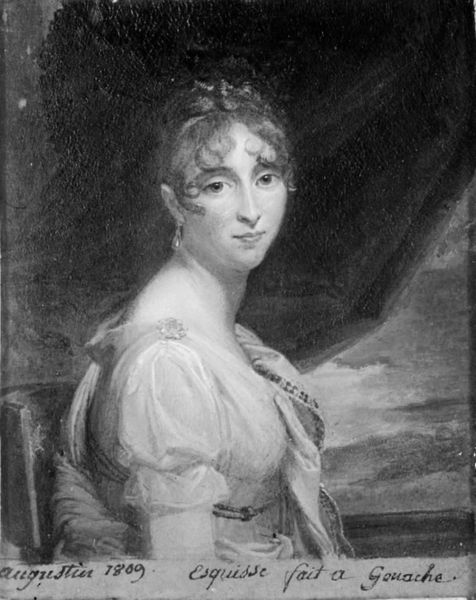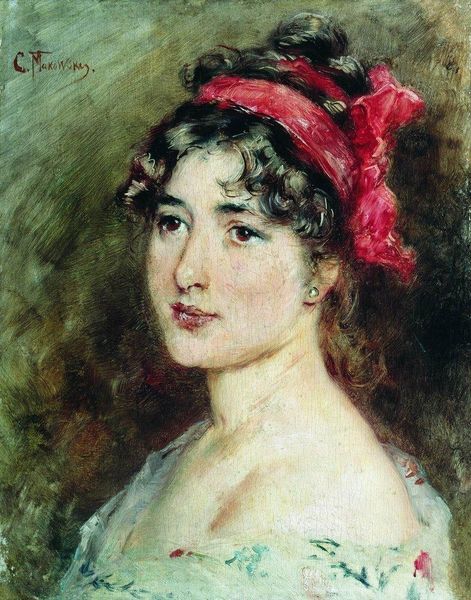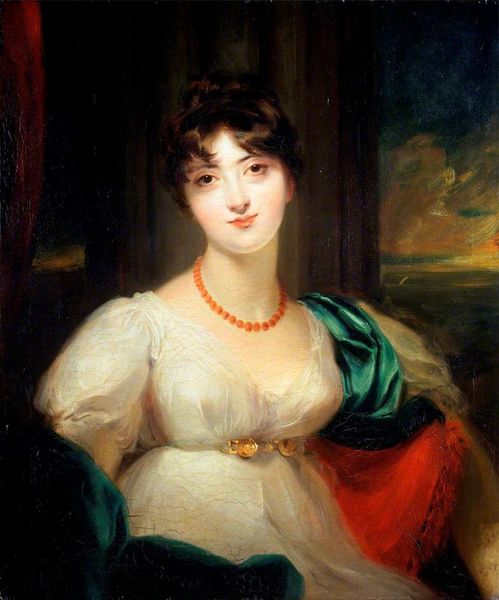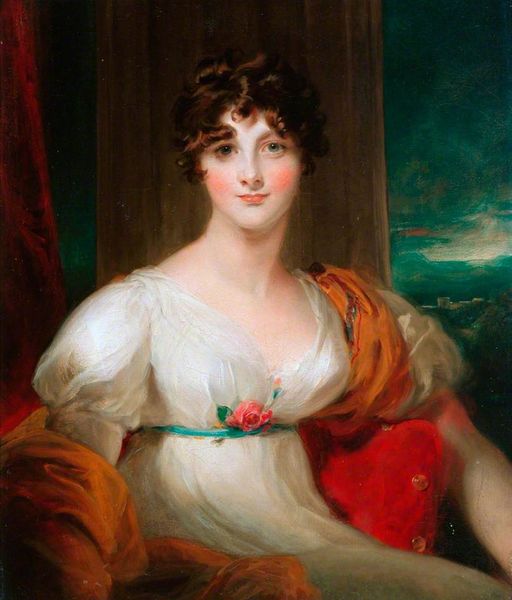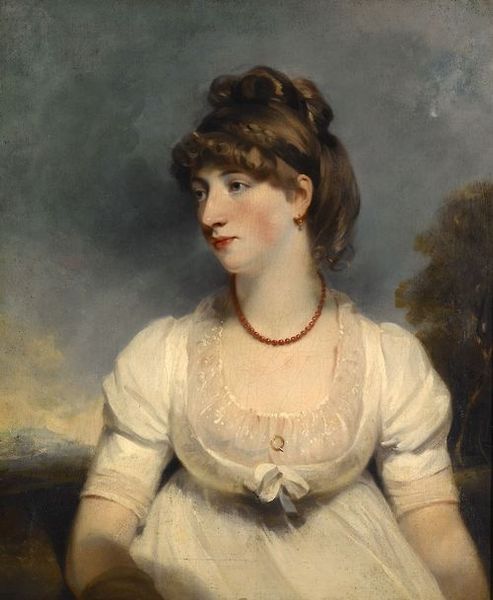
painting, oil-paint
#
face
#
portrait image
#
painting
#
oil-paint
#
portrait reference
#
portrait head and shoulder
#
romanticism
#
animal portrait
#
animal drawing portrait
#
portrait drawing
#
facial portrait
#
lady
#
portrait art
#
fine art portrait
#
realism
#
digital portrait
Copyright: Public domain
Curator: Thomas Lawrence’s portrait of Princess Lieven offers an interesting perspective on gender, class, and power in 19th century European society. Editor: It’s remarkably ethereal, almost dreamlike, isn’t it? The texture of the oil paint itself gives the impression of soft skin, almost as if the artist sought to replicate a delicate porcelain finish. Curator: Precisely, this reflects the carefully cultivated image of women within aristocratic circles of the era. Lieven was a celebrated hostess and diplomatic powerhouse. The painting, with its emphasis on her beauty, also subtly obscures the complex political maneuvers in which she was involved, maintaining certain boundaries about gender and decorum. Editor: I find myself drawn to the almost frantic brushwork in the background—a turbulent gray sky pressing against her delicate features. You can see Lawrence laying the groundwork for the textures that give rise to the subject. How different the handling of pigment in those two zones. The contrast seems deliberate, creating an interesting tension. Curator: Definitely, the backdrop can be read as a reference to the chaotic political landscape she navigated, from the Napoleonic Wars to the rise of nationalism. The portrait can be examined using insights from feminist theory and critical race studies for how they complicate her identity. The portrait invites the viewer to deconstruct the role assigned to her as a woman in a patriarchal political environment. Editor: Thinking about the context of painting at the time, there’s this constant tension between academic tradition and new modes of production. I’m curious how Lawrence’s studio was structured. What level of craft and assistance was involved in preparing the ground, mixing the pigments, and even laying in those early brushstrokes? The final image becomes a record, obscuring much of that material reality. Curator: And that, for me, is the central question. The romantic, seemingly effortless beauty is a deliberate construction concealing layers of historical complexity and socio-political manipulation. Editor: Well, thinking about it now, I'm left questioning what isn’t visible: The social relations inscribed within the act of its production. Curator: I agree, together we've highlighted how the image obscures her multifaceted position in society. It encourages critical conversations.
Comments
No comments
Be the first to comment and join the conversation on the ultimate creative platform.

